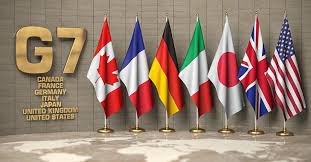Confiscation or blackmail: Europe is considering how to use blocked Russian assets
6 March 16:14
France admits the possibility of seizing Russian assets blocked in Europe and using these 200 billion euros to secure new loans to Ukraine. This was reported by Politico, according to "Komersant Ukrainian".
French officials do not publicly talk about the possibility of seizing Russian assets for legal reasons, as these assets are the property of the Russian central bank. Economy Minister Eric Lombard told Franceinfo that since France is not in a state of direct war with Russia, “these assets cannot be seized because it would be contrary to an international agreement.” But privately, they confirm both the possibility of such an arrest and the fact that such negotiations with partners are underway.
How much Russian money is stuck in Europe
After the start of Russia’s full-scale invasion of Ukraine in February 2022, European authorities froze Russian assets worth about 200 billion euros. They are stored in the Brussels-based financial institution Euroclear.
Last year, the G7 countries agreed to use the profits earned from these assets to secure a loan to Ukraine, but ruled out direct use of the underlying assets as it risks violating international law.
Trump’s actions are changing Europeans’ attitudes toward Russian assets
US President Donald Trump’s decision to suspend military aid to Ukraine and his apparent indifference to Russia’s history of violating peace agreements have sparked renewed interest among Europeans in the idea of using frozen Russian assets.
Also, given Trump’s potential willingness to abandon security guarantees in Europe, European leaders are seriously considering how to strengthen European defense and help Kyiv.
It’s worth recalling that just this week, European Commission President Ursula von der Leyen announced a large-scale plan to increase military spending to strengthen Europe’s defense capabilities. And Russian money can help ease Europeans’ financial burden.
Russian money as an opportunity to help Kyiv
A French official, speaking on condition of anonymity, told Politico that members of the French government have privately discussed the possibility of seizing Russian assets, including with their German counterparts, to potentially use them to guarantee loans to Kyiv.
The UK government supports the use of frozen assets to support Ukraine, and while Germany opposes this option, the government of likely new Chancellor Friedrich Merz may change course. Norbert Röttgen, a senior member of Merz’s Christian Democratic Union, has called for the assets to be used to support Kyiv.
An even more radical position is advocated by the Baltic states and Northern Europe, which are Russia’s neighbors. They believe that the money should be transferred to Ukraine immediately. However, France is considering using these assets only to guarantee additional loans to support Ukraine.
Russian money as a way to put pressure on Russia
Politico draws attention to the fact that high-ranking French officials have been publicly hinting in recent days that 200 billion euros could give Brussels and Kyiv powerful leverage over the Kremlin in any peace talks – and not just those led by Washington.
Earlier, the Financial Times reported on talks between France, Germany, and the United Kingdom to use frozen assets as a way to force Russia to respect the peace agreement. However, the office of French President Emmanuel Macron denied that such discussions had taken place.
However, last week in Washington, Emmanuel Macron said that frozen assets should be “part of the negotiations at the end of the war,” and his European Affairs Minister Benjamin Haddad told France 2 on Tuesday that the government would consider using the assets as leverage against Russia. At the same time, French officials still recognize the legal problems and the fact that confiscation of assets without clear legal grounds could scare investors.
How Russian money is already working for Ukraine
In June last year, the G7 countries agreed to extend a $50 billion loan to Ukraine, to be repaid with interest from frozen Russian assets.
“We are not talking about the confiscation of these assets, but about the interest on them that accumulates over time,” Italian Prime Minister Giorgia Meloni emphasized at the time.
The proposal to help Ukraine in this way was put forward by the then US presidential administration.
Last December, Ukrainian Finance Minister Sergiy Marchenko signed an agreement with the EU to establish a Credit Cooperation Mechanism for Ukraine, which will allow the proceeds of frozen Russian assets to be used to repay loans of up to €45 billion under the G7 ERA initiative.
In January of this year, the European Commission disbursed the first tranche of EUR 3 billion to Ukraine as a loan under the exceptional macro-financial assistance to be repaid from the proceeds of frozen Russian state assets in the EU.
As the European Commission reminded, this loan, which amounts to up to 18.1 billion euros, is the EU’s contribution to the Group of Seven-led initiative “Additional Revenue Arrangement for Ukraine” (ERA), whose overall goal is to provide Ukraine with financial support worth about 45 billion euros.









